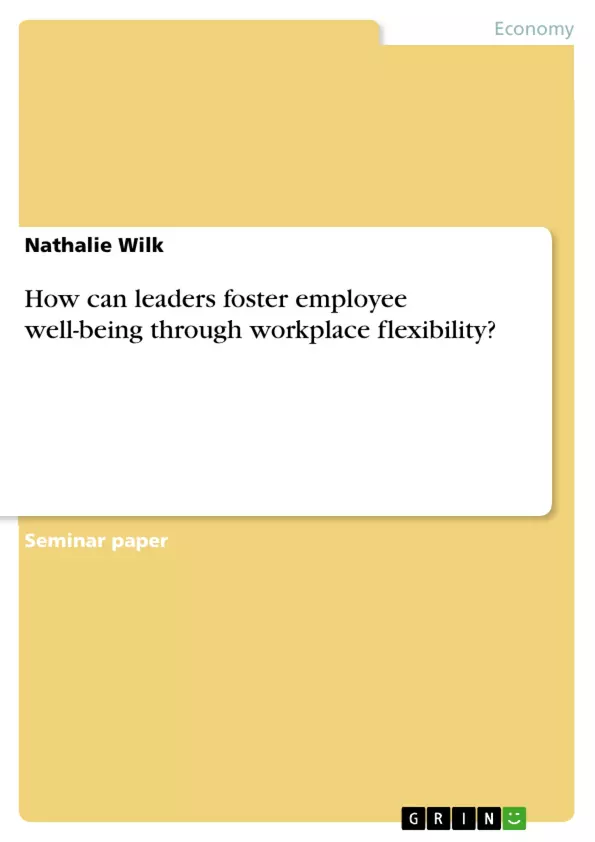Organizations all over the world have discovered that employee well-being is crucial for the success of their business and the trend towards a healthy workplace is also nudged by a new, demanding generation of employees entering the workforce, millennials. While various actions and programs can facilitate employee well-being, the focus of this seminar paper lies on a particular facet of work/life balance, namely workplace flexibility. In the following, it points out the benefits of flexible working possibilities for both workers and organizations, explains how leaders can foster well-being through workplace flexibility and also takes challenges and downsides that may emerge into account.
Inhaltsverzeichnis (Table of Contents)
- Abstract
- Introduction
- Main part
- Reaching employee well-being through workplace flexibility
- How organizations benefit from employee well-being
- Why employees are looking for flexible working
- Where employers can request flexible working by law - the UK
- How can employers and leaders enable flexible working?
- Downsides of working flexibility
- Discussion
- Conclusion
- Literature
Zielsetzung und Themenschwerpunkte (Objectives and Key Themes)
This seminar paper explores the relationship between workplace flexibility and employee well-being. It aims to shed light on how leaders can foster a healthy workplace by offering flexible working options. The paper investigates the benefits of flexible working for both employees and organizations, and examines the challenges and potential downsides associated with such arrangements.
- The benefits of workplace flexibility for employees
- The positive impact of employee well-being on organizational success
- The drivers and trends influencing employee demand for flexible working arrangements
- The role of leadership in enabling and managing workplace flexibility
- Potential challenges and limitations associated with flexible working
Zusammenfassung der Kapitel (Chapter Summaries)
- Abstract: This chapter introduces the seminar paper's focus on workplace flexibility as a key factor in promoting employee well-being, highlighting its relevance for both individual employees and organizational success. The emphasis is placed on the benefits of flexible working arrangements for both workers and employers.
- Introduction: The importance of a healthy workplace is emphasized, linking it to both organizational profitability and employee well-being. The chapter explores the historical evolution of the concept of a healthy workplace and highlights the increasing prevalence of employee well-being programs in organizations.
- Main part: This section delves into the relationship between workplace flexibility and employee well-being. It outlines various forms of flexible working arrangements and their potential benefits, discussing how organizations can leverage flexibility to attract and retain employees.
Schlüsselwörter (Keywords)
The core keywords and focus topics of this text include: employee well-being, workplace flexibility, work/life balance, organizational success, leadership, healthy workplace, Generation Y, millennials, benefits of flexible working, challenges of flexible working, and legal considerations for flexible working.
- Quote paper
- Nathalie Wilk (Author), 2015, How can leaders foster employee well-being through workplace flexibility?, Munich, GRIN Verlag, https://www.grin.com/document/368321



